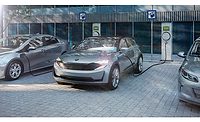PPG Selected for DOE Partnership to Speed Development of Adhesives for Lightweight Vehicles
PPG will collaborate with DOE’s Lawrence Livermore National Laboratory and Pacific Northwest National Laboratory to develop computer-based models of the aging characteristics of a variety of next-generation adhesives designed to join lightweight materials.

PPG recently announced that it has been selected for a U.S. Department of Energy (DOE) partnership that will use supercomputing resources to accelerate the development and testing of structural adhesives for vehicles built from lightweight materials. The project was reportedly authorized by the DOE Vehicle Technologies Office, with funding provided by the High Performance Computing for Energy Innovation (HPC4EI) program.
PPG reports that it will collaborate with DOE’s Lawrence Livermore National Laboratory (LLNL) and Pacific Northwest National Laboratory (PNNL) to develop computer-based models of the aging characteristics of a variety of next-generation adhesives designed to join lightweight materials. Vehicle manufacturers are exploring the use of high-strength steel, aluminum, magnesium, carbon-fiber composites, and other lightweight materials to reduce vehicle mass and improve fuel economy. This approach requires new adhesive chemistries that will mitigate corrosion and thermal expansion issues associated with joining dissimilar materials.
“It is critical to understand how adhesive bonds evolve over the life of a vehicle,” said Peter Votruba-Drzal, PPG global technical director, automotive OEM coatings. “This knowledge has traditionally come through iterative formulation and testing, including lengthy exposure tests. This project will enable us to reduce adhesives testing time by up to 75%, which in turn will help manufacturers accelerate their development of increasingly energy-efficient vehicles.”
The project will use supercomputing to achieve a fundamental understanding of the influence of water—a key determinant in the aging process—on the chemistry and adhesion properties of adhesives joined to lightweight substrates. Supercomputing resources are necessary because of the extremely large data sets involved in each simulation.
PPG will provide $60,000 for the project in the form of technical activities at the company’s Global Coatings Innovation Center in Allison Park, Pa. The DOE will provide $300,000 to LLNL and PNNL for modeling expertise and the use of supercomputing resources.
For more information, visit www.ppg.com and https://hpc4energyinnovation.llnl.gov.
Looking for a reprint of this article?
From high-res PDFs to custom plaques, order your copy today!





